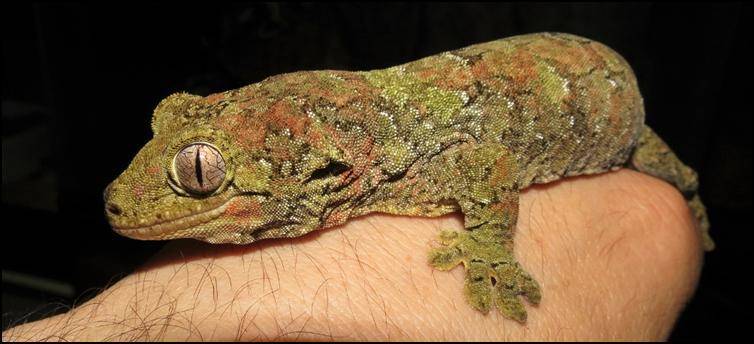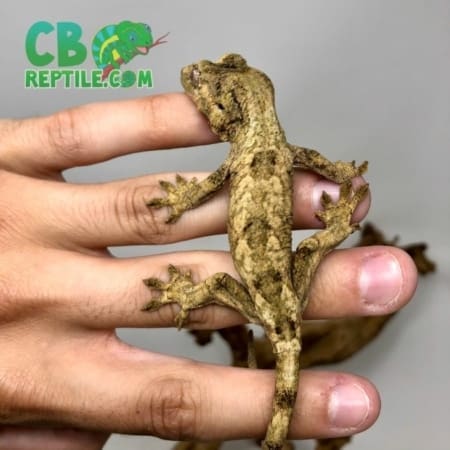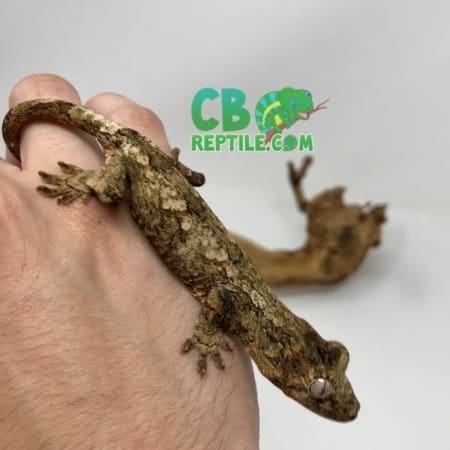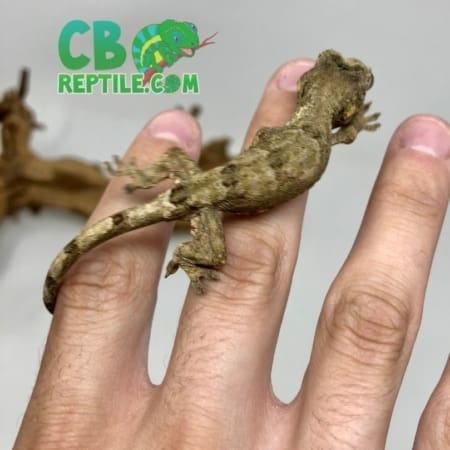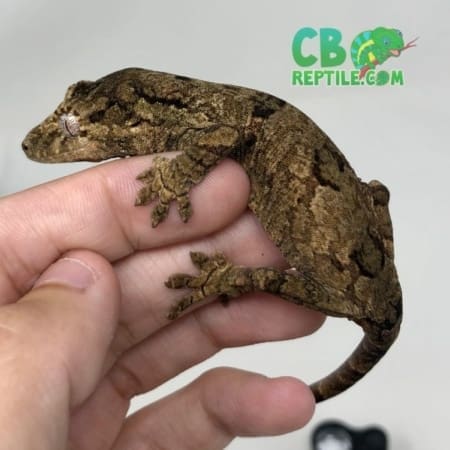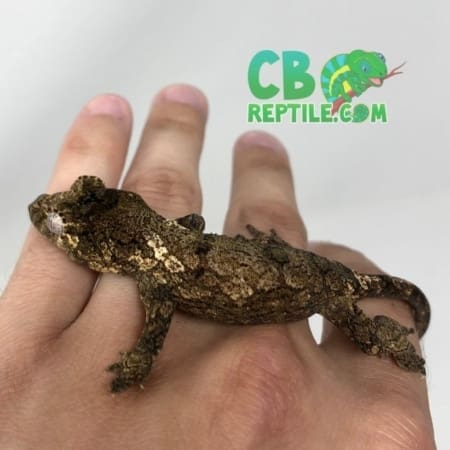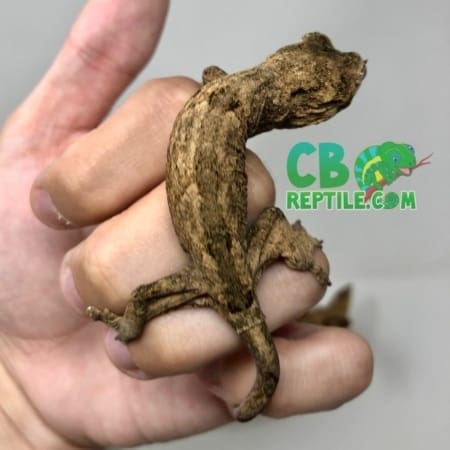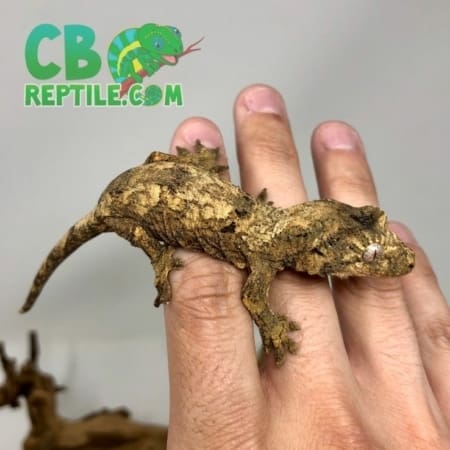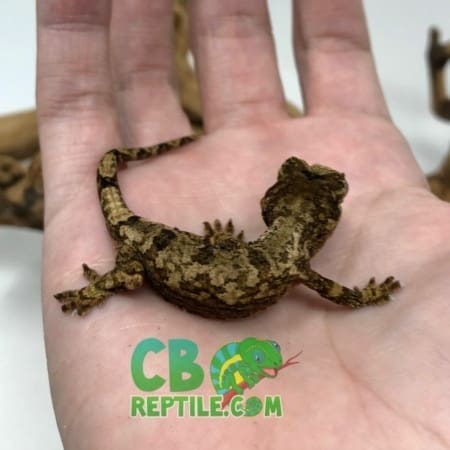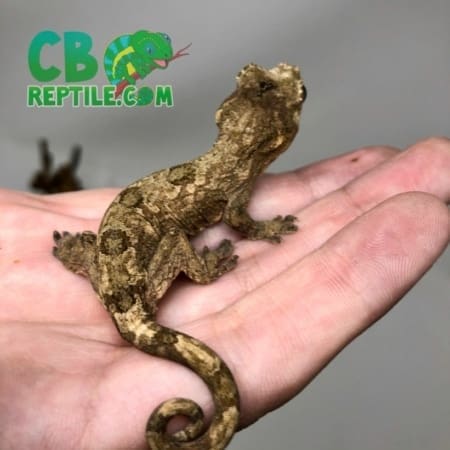Chahoua Gecko Care Sheet
Before purchasing your new pet chahoua gecko for sale, be sure to find a reputable chahoua gecko breeder who only carries 100% captive bred baby chahoua geckos for sale online. The Chahoua gecko, also known as the Mossy gecko is the third largest Rhacodactylus species, reaching around 10 inches total length, and about 45-75g. They are a nocturnal gecko, but dont let that put you off! Mine will sleep out in the open for most of the day, and be wandering about by about 6pm, looking for their breakfast!
They are native to New Caledonia and the small islands around it, this is where the two different types of gecko come from. The Mainland, and Pine Isle locales. Pine Isle are slightly rarer to come by, and can be slightly larger than their mainland siblings, also their colours are supposed to be slightly brighter. However, mainland Chahoua’s can come in some stunning colours too.
Mossy geckos, like all Rhacs have sticky pads called ‘Lamellae’ on their toes and also on the very tip of their tails. They also have a Prehensile tail which functions as an extra limb, this is unique to Chahoua’s. Its very cute when you pick one up, as they start to curl their tails around your hand to get a better grip. This is one of the good features about them as well, as it makes them feel a lot more sturdy than other geckos, they aren’t going to fall anywhere!
Mossy Geckos shed their skin regularly, their skin will start to look white and papery. They will use cork bark to help them rub their skin off, as well as their own teeth, and their skin will come off all on one go. You wont usually find any evidence of shedding, other than a suddenly bright coloured gecko, as they will eat their shed skin.
It is not known exactly how long Chahoua’s will live in captivity, however it is suspected to top 20 years. They are a very long lived pet, so that should be taken into consideration before purchasing.
Female mossy’s can be quite hard to sex, but by about 12 months you should be able to clearly see a large bulge on the underside of the base of the tail, on a male Chahoua. You will also be able to spot little white spurs on either side of the bulge. You can identify the sex by looking for pre-anal pores on a male, however this is very difficult.
Housing
Chahoua’s are a semi-arboreal gecko, meaning they spend most of their time off the ground, on branches or tree trunks. Consequently, they require more height in their enclosure than say a leopard gecko. I keep most of my Chahoua’s in Exo Terra glass vivariums, as these are more suited to high humidity than a wooden tank. Plus, i can see my geckos better!
I would keep a single adult Chahoua in a minumum tank size of 45X45X60H, and they are perfectly happy in there for their whole lives. However, more space is always better, so i keep pretty much all of them in their own 45X60X60H. This just gives them that little bit extra room to move around.. and boy do they use it! A chahoua pair can be kept in a 45X45X60, but a 45X60X60 is much, much better.
They seem to really appreciate plenty of horizontally placed branches in their tanks, as well as large pieces of cork bark to snooze behind. You will find they also prefer slightly thicker branches than a crested gecko. All branches will need to be secured well, as Chahoua’s have an amusing habit of launching themselves at things quite hard.. so if a branch is just propped up, it could end up falling on top of the gecko. I use aquarium grade silicone to glue all my horizontal branches in, and this works a treat!
For substrate, i use eco earth and orchid bark, as this gives everything a nice natural look. Also, it really helps retain moisure, and keep the humidity high!
Always make sure all bulbs are outside their enclosure. Even a bulb with a guard is no good for geckos, you will need to get a reflector hood and sit it on top of the tank. This goes for UV bulbs to.
Heating, Lighting & Humidity
Heat:
Mossy geckos are not supposed to require any additional heat sources than that in your own house. This is what i was first told when i got Wally.. however i have a bit of a cold house, so i thought i would provide him with a spot light, just to be safe. After then seeing him bask under it every day since, i would never not supply one again!
I truly do think they appreciate a basking spot in their tanks, of about 80-84F, as all of them seem to sit under it during the day. However, you will need to make sure you can provide a good temperature gradient, and a place to hide at both sides of the tank during the day, so they can get away from the heat if they want to. The cool side of the tank should drop to about the mid 60’s to mid 70’s.
During the night i use one heat mat for each tank, attached to a mat-stat and stuck to the outside of the tank. This warms the tanks up to about 70-74F and they seem very happy indeed with that. I like to provide a heat mat just incase it is a chilly night, they can warm themselves up again.
I would always reccomend using thermostats to control the heating for Chahoua’s, as their temperatures need to be kept relatively cool and bulbs can easily overheat without one.
Lighting:
As a nocturnal animal, it is currently beleived that you do not need to supply Chahoua’s with any source of UV light. So far, i have not used UV lights for my chahouas, and they dont seem to suffer any ill without it. However, once i get my females breeding i think i am going to give it a go with them, and see how they respond to it.
Humidity:
It is thought that Chahoua’s are supposed to need more humidity than Crested Geckos, however i dont keep them so i cant comment on that. They do however need their tanks to be kept nice and humid, at about 55-70% humidty. This can fairly easily be acheived by having a damp substrate, a water bowl, and misting their tanks once or twice a day (alowing it to dry between sprayings). Humidity can be measured using a digital hydrometer, which are fairly easy to get hold of in most pet shops.
Feeding
Mossy Geckos are partly frugivorous, which basically means that their diets consist of non-citrus fruit, as well as insects. I feed my chahoua’s with Crested Gecko meal replacement powder (CGD), developed by Allen Rapashy, this contains all the calcium they need.
I just blend some fresh fruit (Mango, pears, strawberies, kiwi etc) and add in some CGD (about 15-20g per two large pieces of fruit, eg a mango+pear) splash in a couple of tablespoons of water and a teaspoon of organic honey and voila! If you pour this mix into ice cube trays and freeze, you can defrost a cube at a time, and it will last for ages! (I tend to chuck mine if its been in the freezer longer than 3 months).
Be careful when feeding banana’s to Chahoua’s, as they are known to bind calcium and can be bad for them if fed too much. Also Citrus fruit should always be avoided.
Like most Rhacodactylus, Chahoua’s can be fed live insects such as, crickets, locusts and roaches. I tend to find mine actually prefer their fruit mix to bugs, but they do like a nice black cricket or large locust! It is best to follow the rule of – no bigger than the distance between the geckos eyes – when it comes to feeding livefoods, and always make sure you dust their livefood with calcium powder.
Some people do feed their mossy geckos baby food, however i would never do it myself and i wouldn’t reccomend using it, as it is just not meant for reptile consumption – too much sugar, preservatives and chemicals. It can also put the gecko off going back into healthier foods such as CDG.
I replace my Chewies fruit mix every two days, so the fruit doesn’t go off, and they get a constant supply, and i offer them insects twice a week.
I feed my mossy’s about an hour after the lights go off at night, as they are most active during the night.
Breeding
Chahoua’s are one of the harder Rhac species to succesfully breed, and hatch out.
Females must be of a good age and weight before breeding can be considered. Preferably i would say keep males and females seperate untill the females are about 2 years old, and the males about 18 months. This is because of the amount of strain a females body is put under during egg production.
During mating, the male will mount the female, and grasp the soft fleshy part of her neck with his mouth. The male can get quite noisy while this is happening, making clicking noises (a bit like an angry chittering hamster in my experiance) and although it may look a bit rough, it is completely normal.
A female will normally be gravid for around 30-35 days, before she produces two eggs. I think on average, they lay around 3 clutches a year, but they can go on to lay as many as 6, as the females can retain sperm.
The female wont bury her eggs (i say that, she might, but they dont usually), they tend to lay them on the surface of the substrate or under some leaf litter. Chahoua’s tend to ignore any lay boxes provided and go off and hide their eggs in the most hidden away place they can find lol which can be annoying. However, it is always worth trying to provide them with something to lay in, just incase.
You should keep a very close eye if you think a female is about to lay eggs, as if left too long in the enclosure they will dry out and die. If you do manage to find the eggs, very carefully mark the top with a soft pencil, and do not turn them from that position. The reason you cannot turn the eggs is that the embryo inside the egg will have attached itself to the shell, and tipping it upside down can either sever the connection, or drown it.
Mossy eggs are the most highly calcified eggs of all Rhacs, so the shells are a lot thicker and harder. This is not neccesarily a good thing though, as it is a lot harder to tell whatis going on inside the eggs. They may look fine from the outside, but actually be dehydrated. This is also why the hatch rate of these geckos is a lot lower than other Rhacs, the babies inside can fully deveop, then be unable to break through the thick shell, and die.
Another problem with the high amount of calcium used on the eggs is of course what it does to the mother. After laying her eggs, the female should be taken special care of, to make sure she gets lots of extra calcium to build up her supplies again.
Eggs can take anything from 70 – 200 days to hatch (i know!), so it is a biiig waiting game on these little guys. The eggs should be incubated at around 27C, and should hopefully hatch out within about 90-100 days. They need to be on a suitable substrate (vermiculite, perlite etc) and the substrate must be kept moist. Try to give the eggs some air a couple of times a week, to prevent it becoming too stale.
If your lucky enough to have baby mossy’s hatch, the worrying is over! Woohoo!
Any baby Chahoua’s that make it out of the eggs will be super strong, and resiliant, and are just miniatures of the adults, already able to look after themselves! You can transfer them to a small plastic faunarium after 24hrs, on damp paper towels. Make sure you remove any of the incubation substrate, as they could swallow this and choke. And just keep an eye on them for their first shed, as this is a big thing for such a little gecko!
Try to keep their tanks simple and safe, and handling to a minimum while they are really tiny (as they are a bit skitty), and move them into progressively bigger tanks as they grow

